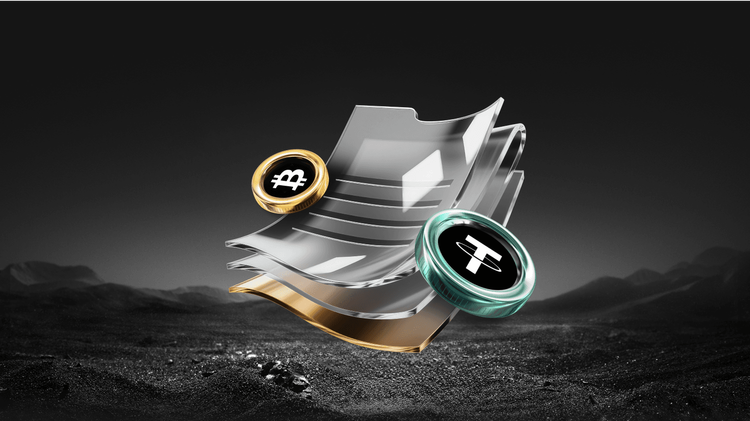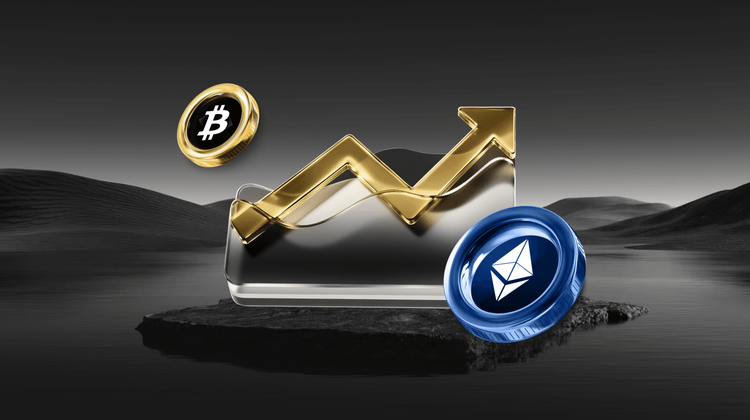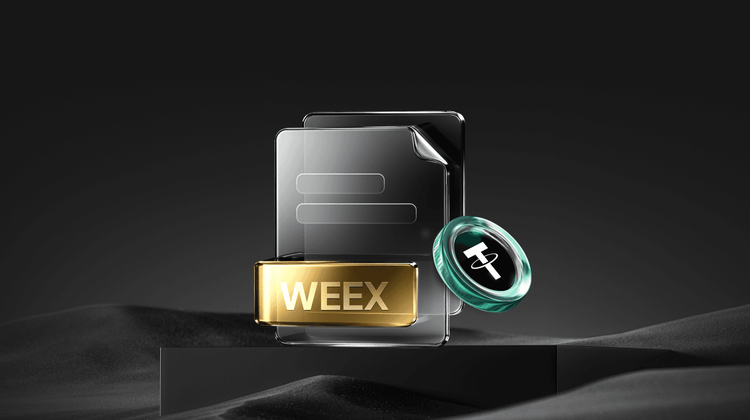What is Avalanche (AVAX)? A Comprehensive Guide
Key Takeaways
- Avalanche (AVAX) is a high-performance blockchain platform designed for decentralized applications and custom networks, rivaling Ethereum with its ability to process up to 6,500 transactions per second while maintaining scalability and low fees.
- Its unique architecture features three interconnected chains—the X-Chain for asset exchanges, C-Chain for smart contracts, and P-Chain for coordination—each using tailored consensus mechanisms to enhance efficiency and security without relying on traditional proof-of-work or proof-of-stake models.
- AVAX serves as the native token for network fees, staking, and governance, powering an ecosystem that includes DeFi, NFTs, and cross-chain interoperability, with a total supply cap of 715,748,719 tokens to control inflation.
- Advantages include rapid transaction finality, energy efficiency, and developer-friendly tools, making it ideal for real-world applications like gaming and finance, though it faces risks from market volatility and competition in the crowded layer-1 space.
- Since its 2020 mainnet launch, Avalanche has grown through partnerships with projects like SushiSwap and TrueUSD, fostering a vibrant community and positioning itself as a scalable alternative in the crypto industry.
What Is Avalanche (AVAX)?
Avalanche (AVAX) is a versatile layer-1 blockchain platform that enables the creation of decentralized applications, custom blockchains, and smart contracts, distinguished by its innovative subnet architecture and high throughput capabilities.
Imagine you’re trying to build a super-fast highway for digital money and apps— that’s Avalanche in a nutshell. Launched in 2020, it burst onto the scene as a challenger to Ethereum’s dominance in the smart contract world. The core idea? Speed and scalability without the usual bottlenecks. Founded by a team of computer scientists from Cornell University, including Emin Gün Sirer, Avalanche isn’t just another crypto; it’s a full ecosystem designed to handle everything from simple token swaps to complex DeFi protocols. At its heart, AVAX acts as the fuel—paying for transactions, securing the network through staking, and even letting users vote on governance decisions. The platform’s ecosystem has expanded rapidly, integrating with Ethereum tools while building its own world of dApps, NFTs, and more. Think of it like a customizable Lego set for blockchains, where developers can spin up their own networks tailored to specific needs, all connected seamlessly.
Origins and Background
Avalanche didn’t come out of nowhere. It traces its roots back to academic research on consensus protocols, aiming to solve the blockchain trilemma—balancing speed, security, and decentralization. The project gained traction during the 2020 DeFi boom when Ethereum’s high gas fees frustrated users. Proponents highlight its eco-friendly approach, using far less energy than proof-of-work chains like Bitcoin.
Key Proponents and Founding Team
Emin Gün Sirer, a professor at Cornell, leads the charge, bringing expertise from years of blockchain research. His team at Ava Labs includes Kevin Sekniqi and Maofan “Ted” Yin, who co-authored the groundbreaking whitepaper. They’re not just theorists; they’ve built a company focused on real-world adoption.
Core Concept of Avalanche
At its core, Avalanche uses “subnets”—independent blockchains that can be customized and interconnected. This allows for massive scalability. Ever wondered why some blockchains feel sluggish? Avalanche fixes that with near-instant finality, processing transactions in under two seconds. It’s like upgrading from dial-up to fiber optic internet for your crypto needs.
Ecosystem Overview
The ecosystem buzzes with activity. From DeFi hubs like Trader Joe to NFT marketplaces, it’s a playground for innovation. Partnerships with traditional finance players hint at broader adoption, blending crypto with everyday banking.
Who Created Avalanche (AVAX)?
Avalanche was born from the minds of brilliant academics who saw the limitations in existing blockchains and decided to rethink the whole system. Emin Gün Sirer, a Turkish-American computer scientist and professor at Cornell University, is the driving force. He’s no stranger to crypto—back in 2003, he co-authored a paper on Karma, one of the earliest proof-of-stake concepts. Fast-forward to 2018, and Sirer teamed up with Kevin Sekniqi and Maofan “Ted” Yin to form Ava Labs, the company behind Avalanche.
The project’s origins stem from a desire to create a faster, more scalable alternative to Ethereum. They released the whitepaper in 2018, detailing a novel consensus mechanism inspired by gossip protocols—think of it as blockchain nodes chatting efficiently to agree on transactions. Historical milestones include the 2020 mainnet launch, which raised $42 million in a token sale, and rapid growth in 2021 with integrations like the Aave lending protocol. By 2022, Avalanche hit over 1 million monthly active users, a testament to its traction. Sirer often jokes in interviews that Avalanche is “Ethereum on steroids,” highlighting its speed without the bloat.
Background on Founders and Team
The team at Ava Labs combines academic rigor with practical engineering. Sirer handles vision and research, while Sekniqi focuses on operations, and Yin dives into protocol design. They’ve attracted talent from Google, Microsoft, and even NASA, building a diverse group passionate about democratizing finance.
Project Origins and Whitepaper
The whitepaper, titled “Scalable and Probabilistic Leaderless BFT Consensus through Metastability,” lays out Avalanche’s math-heavy foundation. It emerged from Cornell’s Initiative for Cryptocurrencies and Contracts (IC3), emphasizing security through randomness rather than energy-intensive mining.
Historical Milestones
Key dates? September 2020: Mainnet goes live. April 2021: Integration with Chainlink oracles boosts DeFi. 2023 saw subnet expansions for gaming, like with Ubisoft partnerships. These steps show Avalanche evolving from a research project to a crypto powerhouse.
FAQs on Avalanche’s Creation
Who funds Avalanche? Primarily through token sales and venture capital from firms like Andreessen Horowitz.
Is the team still involved? Absolutely—Sirer remains CEO, steering the ship.
How Does Avalanche (AVAX) Work?
Avalanche operates on a unique tri-chain architecture, making it stand out in the crypto crowd. Picture three specialized highways: the X-Chain for exchanging assets like AVAX tokens, the C-Chain for Ethereum-compatible smart contracts, and the P-Chain for coordinating validators and subnets. This setup isn’t like Bitcoin’s single-lane road; it’s a multi-lane expressway where each chain handles its job efficiently.
At the tech heart is the Avalanche consensus—a directed acyclic graph (DAG) protocol. Nodes repeatedly sample each other randomly, building confidence in transactions without needing a central leader. It’s like a group of friends voting on dinner plans by quick polls until everyone agrees. No blocks here; transactions finalize in seconds, hitting that 6,500 TPS mark. Security comes from validators staking AVAX, with slashing for bad behavior. Smart contracts run on the C-Chain using Solidity, just like Ethereum, but with lower fees. Private and public keys? Standard stuff—your public key is your address, private key unlocks your funds. It’s all built for speed, but don’t worry, it’s as secure as they come.
Operational Mechanisms
Consensus isn’t proof-of-work (energy hog) or pure proof-of-stake. It’s a hybrid, using repeated sampling for quick agreements. Subnets let developers create custom chains, perfect for enterprises needing privacy.
Blockchain and Consensus Mechanisms
The DAG structure means no linear chain of blocks—transactions link directly, reducing latency. Validators “gossip” info, ensuring the network stays honest.
Smart Contracts and Technical Principles
Developers love it because it’s EVM-compatible. Write code in Solidity, deploy on C-Chain, and boom—your dApp runs fast. Public keys broadcast transactions; private keys sign them securely.
FAQs on How Avalanche Works
What’s the difference from Ethereum? Avalanche is faster and cheaper, thanks to its architecture.
Is it really secure? Yes, with over 1,000 validators and statistical guarantees.
How Is New Avalanche (AVAX) Created?
New AVAX isn’t “mined” like Bitcoin; it’s minted through staking and network rewards. The total supply is capped at 715,748,719 tokens, with about 422 million in circulation as of August 2025. Inflation is controlled—around 7-12% annually—to incentivize participation without flooding the market.
Validators stake AVAX to secure the network, earning rewards based on uptime and performance. It’s like putting your money in a high-yield savings account that also guards the bank. The minimum stake is 2,000 AVAX, and delegation lets smaller holders join in. Rewards are distributed every two weeks, calculated via a formula considering the total staked amount. No halvings here; it’s a steady model to encourage long-term holding. Ever staked crypto before? It’s straightforward—lock up tokens, help validate, and watch rewards trickle in. This issuance keeps the ecosystem humming without the energy waste of proof-of-work.
Issuance Method and Mechanisms
Tokens are released through staking rewards and initial distributions. Early sales and airdrops seeded the supply.
Mining/Staking Mechanisms
No mining hardware needed. Stake via wallets like Core or Ledger, choose a validator, and earn yields up to 9% APY.
Inflation Model and Supply Limits
Capped supply prevents endless printing. Burning fees from transactions adds deflationary pressure, like how Ethereum burns ETH.
Reward Mechanisms
Top performers get bonuses; it’s merit-based. Think of it as a meritocracy for nodes.
What Are the Use Cases of Avalanche (AVAX)?
Avalanche shines in DeFi, where low fees and speed make lending, borrowing, and trading a breeze—platforms like Benqi and Pangolin handle billions in volume. It’s a hub for NFTs too; imagine minting digital art without waiting ages or paying outrageous gas. Gaming? Subnets power blockchain games with real economies, like in DeFi Kingdoms.
Payments and cross-border transfers? AVAX zips funds globally in seconds, cheaper than banks. Governance lets stakers vote on upgrades, giving users a real say. Store of value? With its cap, it’s like digital gold with utility. Smart contracts enable everything from automated insurance to supply chain tracking. Picture sending money to a friend abroad without intermediaries— that’s Avalanche in action, making crypto practical for everyday folks.
Application Scenarios
DeFi dominates, but it’s expanding to real estate tokenization and Web3 social apps.
Payments and Value Storage
Fast settlements beat traditional wires. Hold AVAX as an appreciating asset.
DeFi, Smart Contracts, and NFTs
Integrations with SushiSwap bring Ethereum liquidity. NFTs thrive on platforms like Kalao.
Governance and Cross-Border Transfers
Vote on proposals via staking. Borderless, low-cost remittances are a game-changer for migrants.
How Can You Buy, Send, or Store Avalanche (AVAX)?
Getting into AVAX is easier than you might think. Start by buying on exchanges—centralized ones like WEEX offer spot trading with fiat onramps. OTC desks work for big purchases, avoiding market slips. For storage, hot wallets like MetaMask (via C-Chain) are convenient for daily use, while cold wallets like Ledger keep things ultra-secure offline. Sending? Copy the recipient’s address, confirm the network (Avalanche C-Chain for EVM compatibility), and hit send—fees are pennies.
Security tip: Enable 2FA everywhere, and never share private keys. The process? Register on an exchange, deposit funds, buy AVAX, withdraw to your wallet. It’s like online shopping, but for digital assets. WEEX Exchange is a trusted spot for this—sign up and snag a free 20 USDT bonus to kickstart trading. They make it seamless for beginners and pros alike.
https://www.weex.com/how-to-buy
Purchasing Channels
WEEX stands out for its user-friendly interface and low fees. Other options include DEXs like Trader Joe for direct swaps.
Wallet Types and Storage Security
Hot: Software like Avalanche Wallet for quick access. Cold: Hardware for long-term holding. Always back up seeds!
Common Operational Processes
Buy: Search AVAX/USD pair, execute trade. Send: Input address, amount, confirm. Store: Transfer to wallet, monitor via explorers.
FAQs on Buying and Storing AVAX
What’s the safest way to store AVAX? Hardware wallets— they’re like a vault for your crypto.
Can I buy AVAX with credit card? Yes, on platforms like WEEX.
Pros & Cons / Risks
Avalanche has plenty going for it, but like any crypto, it’s not perfect. Let’s break it down honestly.
Advantages
- Blazing Speed and Scalability: Processes thousands of transactions per second with sub-second finality—perfect for busy apps.
- Energy Efficiency: No mining farms; its consensus is green, appealing to eco-conscious users.
- Customization via Subnets: Build tailored blockchains without starting from scratch.
- Interoperability: Bridges to Ethereum make migrating dApps easy.
- Strong Security: Random sampling and staking deter attacks.
Risks and Disadvantages
- Market Volatility: Prices swing wildly— that $24.65 today could drop tomorrow.
- Regulatory Uncertainty: Governments might crack down on DeFi platforms.
- Competition: Ethereum upgrades could steal its thunder.
- Technical Risks: Bugs in smart contracts or subnets could lead to losses.
- Centralization Concerns: Top validators hold sway, though it’s decentralized overall.
Weighing these, it’s a solid pick for speed demons, but always DYOR.
Comparison
Avalanche often gets pitted against Ethereum, its main rival. While Ethereum pioneered smart contracts, it’s plagued by high fees and slow speeds—think 15 TPS versus Avalanche’s 6,500. Ethereum uses proof-of-stake now, but Avalanche’s DAG consensus feels snappier, with instant finality. Bitcoin? That’s more of a store-of-value king; Avalanche is for building stuff, not just holding. Solana matches speed but has had outages— Avalanche boasts better uptime. Positioning? Avalanche is the scalable, dev-friendly option for those tired of Ethereum’s congestion. It’s like choosing a sports car over a reliable sedan—faster, but you need to handle the curves.
Key Differences from Ethereum
Ethereum: High gas, broad adoption. Avalanche: Low cost, specialized chains.
How It Stacks Up Against Bitcoin
Bitcoin: Secure but basic. Avalanche: Versatile for apps, with staking yields.
Market & Ecosystem
As of August 20, 2025, at 13:58:10, Avalanche holds strong in the crypto market. Its market cap sits at $10,408,997,282 USD, ranking it #18 overall. Trading volume in the last 24 hours? A hefty $840,925,993 USD, showing lively interest. The circulating supply is 422,275,285 AVAX, with a max of 715,748,719—plenty of room for growth without oversupply.
The ecosystem is thriving. Listed on major exchanges like Binance, Coinbase, and WEEX, it’s easy to trade. Community? Buzzing— over 1 million Twitter followers, active Reddit threads on r/Avax, and Telegram groups with thousands chatting daily. Developer activity is high, with GitHub commits rolling in and partnerships like with Deloitte for enterprise blockchains. Growth comes from subnets attracting games and DeFi, plus integrations boosting interoperability. It’s like a snowball— pun intended—gaining momentum.
Market Cap & Trading Volume
Current price: $24.65 USD, up 6.65% in 24 hours. Volume reflects strong liquidity.
Exchanges Where It’s Listed
Beyond WEEX, find it on Kraken, Huobi, and DEXs like Pangolin.
Community Size & Activity
Twitter: @avalancheavax with daily updates. Reddit: Discussions on upgrades. Telegram: Real-time support.
Ecosystem Growth
Partnerships with Amazon Web Services enhance scalability. Developer grants fuel new projects.
What’s the Latest News of Avalanche (AVAX)?
Avalanche price today, AVAX to USD live price, marketcap and chart
Avalanche price today, AVAX to USD live price, marketcap and chart | CoinMarketCap.
Avax.network: Homepage
- About Avalanche.
Avalanche Price: AVAX Live Price Chart, Market Cap & News Today
Avalanche Price: AVAX Live Price Chart, Market Cap & News Today | CoinGecko The price of Avalanche (AVAX) is calculated in real-time by aggregating the latest data across 139 exchanges and 261 markets, using a global volume-weighted average formula. AVAX token is Avalanche’s native currency. Market capitalization of Avalanche (AVAX) is $10,694,575,403 and is ranked #24 on CoinGecko today.
Avalanche Price, AVAX Price, Live Charts, and Marketcap
Content from Coinbase on Avalanche’s price, live charts, and market cap.
AVAX USD – Avalanche Price Chart
The current price of Avalanche (AVAX) is 22.91 USD — it has risen 2.15% in the past 24 hours. Try placing this info into the context by checking out what coins.
Conclusion / Next Steps
Avalanche’s future looks promising with ongoing subnet expansions and Web3 integrations, potentially revolutionizing sectors like gaming and finance. Dive deeper by checking the official whitepaper or roadmap on avax.network—it’s packed with insights. Join the community on Telegram for real-talk discussions, or explore developer tools to build your own project. If you’re ready to dip your toes, start with a small stake and see how it fits your portfolio. Crypto’s wild, but Avalanche might just be the steady climber you’ve been eyeing.
You may also like

Blockchains Quietly Prepare for Quantum Threat as Bitcoin Debates Timeline
Key Takeaways: Several blockchains, including Ethereum, Solana, and Aptos, are actively preparing for the potential threat posed by…

Former SEC Counsel Explains What It Takes to Make RWAs Compliant
Key Takeaways The SEC’s shifting approach is aiding the growth of Real-World Assets (RWAs), but jurisdictional and yield…

Trend Research Quietly Becomes One of Ethereum’s Largest Whales with Major ETH Acquisition
Key Takeaways Trend Research has acquired 46,379 ETH, boosting their total holdings to about 580,000 ETH. The company,…

Aave’s $10M Token Purchase Raises Concerns Over Governance Power
Key Takeaways: Aave founder Stani Kulechov’s $10 million AAVE token purchase sparks debates over governance power concentration. Concerns…

Web3 and DApps in 2026: A Utility-Driven Year for Crypto
Key Takeaways The transition to utility in the crypto sector has set a new path for 2026, emphasizing…

How to Evaluate a Curator?

Base's 2025 Report Card: Revenue Grows 30X, Solidifies L2 Leadership

From Aave to Ether.fi: Who Captured the Most Value in the On-Chain Credit System?

Venture Capital Post-Mortem 2025: Hashrate is King, Narrative is Dead

DeFi Hasn't Collapsed, So Why Has It Lost Its Allure?

Are Those High-Raised 2021 Projects Still Alive?

NIGHT, with a daily trading volume of nearly $10 billion, is actually coming from the "has-been" Cardano?

Aave Community Governance Drama Escalates, What's the Overseas Crypto Community Talking About Today?

2025 Token Postmortem: 84% Peak at Launch, High-Cap Project Turns into a "Rug Pull" Epicenter?

Polymarket Announces In-House L2, Is Polygon's Ace Up?

Ether pumps to outsiders, dumps in-house. Can Tom Lee's team still be trusted?

The Secret Centralization Landscape of Stablecoin Payments: 85% of Transaction Volume Controlled by Top 1000 Wallets

Audiera Sees Massive Price Surge – Key Cryptocurrency Updates
Key Takeaways Audiera (BEAT) has witnessed significant growth, experiencing a 70.10% increase in the past week. Despite the…
Blockchains Quietly Prepare for Quantum Threat as Bitcoin Debates Timeline
Key Takeaways: Several blockchains, including Ethereum, Solana, and Aptos, are actively preparing for the potential threat posed by…
Former SEC Counsel Explains What It Takes to Make RWAs Compliant
Key Takeaways The SEC’s shifting approach is aiding the growth of Real-World Assets (RWAs), but jurisdictional and yield…
Trend Research Quietly Becomes One of Ethereum’s Largest Whales with Major ETH Acquisition
Key Takeaways Trend Research has acquired 46,379 ETH, boosting their total holdings to about 580,000 ETH. The company,…
Aave’s $10M Token Purchase Raises Concerns Over Governance Power
Key Takeaways: Aave founder Stani Kulechov’s $10 million AAVE token purchase sparks debates over governance power concentration. Concerns…
Web3 and DApps in 2026: A Utility-Driven Year for Crypto
Key Takeaways The transition to utility in the crypto sector has set a new path for 2026, emphasizing…
How to Evaluate a Curator?
Popular coins
Latest Crypto News
Customer Support:@weikecs
Business Cooperation:@weikecs
Quant Trading & MM:bd@weex.com
VIP Services:support@weex.com
